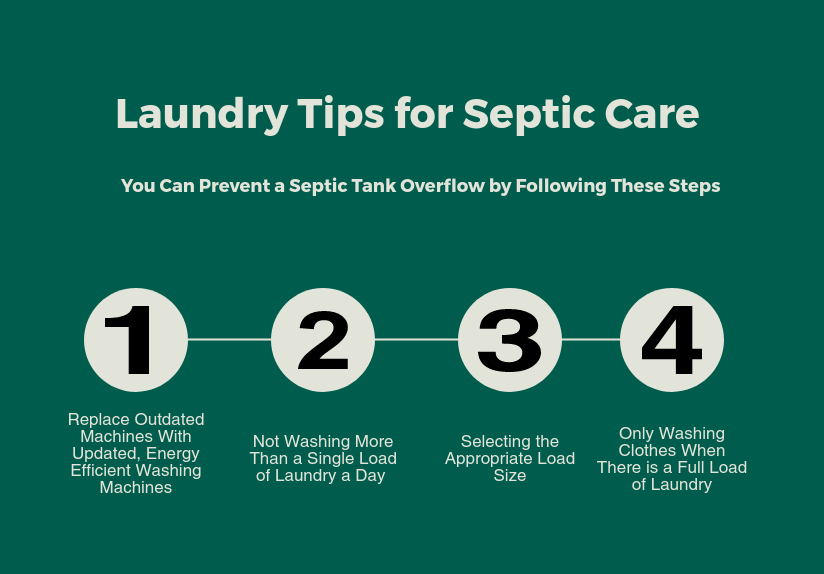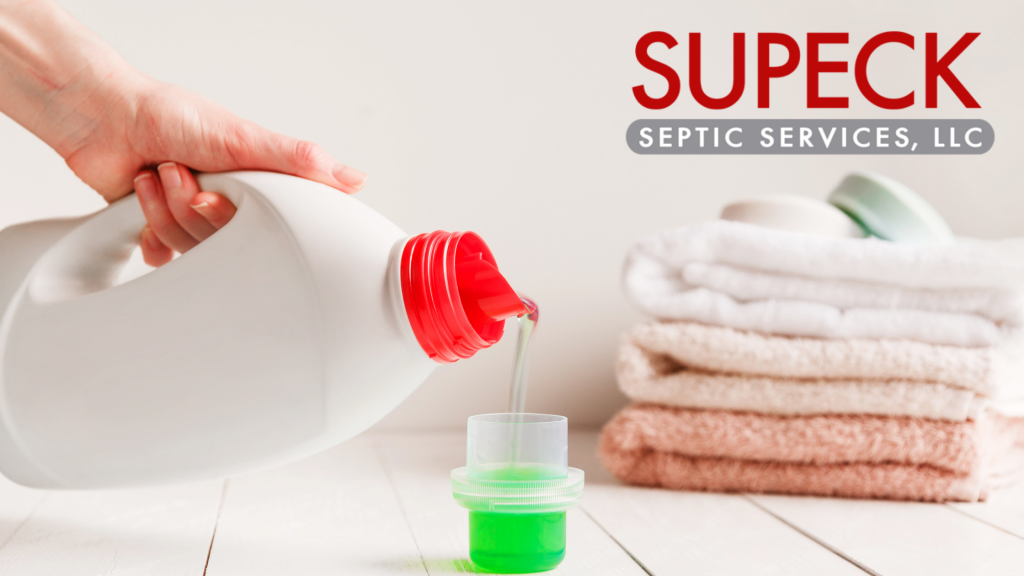In this article, you will discover the optimal number of laundry loads per day that is safe for your septic tank. As a septic tank owner, it’s important to understand the delicate balance between household chores and maintaining the health of your septic system. By knowing the recommended limit, you can ensure the longevity and efficiency of your septic tank while keeping your laundry routine in check.

Factors to Consider
When it comes to determining how many loads of laundry a day are safe to do with a septic tank, there are several factors that need to be taken into consideration. Adhering to these factors will help ensure the proper functioning and longevity of your septic system. From the size of the septic tank to the condition of the drain field, each factor plays a crucial role in maintaining the health of your septic system. Let’s explore each factor in detail.
Size of the Septic Tank
The size of the septic tank is one of the primary factors to consider when determining the number of loads of laundry that can be safely done each day. The size of the septic tank is typically measured in terms of its capacity and reserve capacity.
Tank Capacity
The tank capacity refers to the maximum amount of wastewater that the septic tank can hold at any given time. A larger tank capacity means that the septic system can handle a higher volume of laundry loads per day without causing overload or backup issues.
Reserve Capacity
The reserve capacity, on the other hand, is the additional space left in the septic tank after accounting for the average daily wastewater usage. This reserved space allows your septic system to handle unexpected surges in water usage, such as when you have guests or during special occasions. It is crucial to have a sufficient reserve capacity to accommodate extra laundry loads without putting excessive stress on the septic system.

Number of Household Members
The number of household members also influences the safe number of laundry loads that can be done each day. More people in the household means a higher demand for laundry, which in turn puts an additional burden on the septic system.
Number of Daily Laundry Loads per Person
To determine the number of daily laundry loads per person, divide the total number of laundry loads per day by the number of household members. This calculation helps to distribute the laundry load evenly among family members and ensures that the septic system is not overwhelmed by excessive wastewater.
Total Laundry Loads per Day
To calculate the total laundry loads per day, multiply the number of laundry loads per person by the total number of household members. Keeping this number within a safe range is essential to maintain the balance of the wastewater flow into your septic system.
Water Usage
Water usage is another critical factor to consider when determining the safe number of laundry loads that can be done with a septic tank. The amount of water consumed per load and the total water consumption per day both play a significant role in the overall health of your septic system.
Average Water Consumption per Load
The average water consumption per load can vary depending on the washing machine’s settings, load size, and water efficiency. It is recommended to use high-efficiency washing machines that conserve water and limit the amount of water used per load. The lower the water consumption per load, the less strain it puts on your septic system.
Total Water Consumption per Day
To calculate the total water consumption per day, multiply the average water consumption per load by the total number of laundry loads. By keeping track of your water usage and aiming for optimal efficiency, you can ensure that your septic system is not overwhelmed by excessive water flow.

Type of Laundry Detergent
The type of laundry detergent used can also impact the safe number of laundry loads that can be done with a septic tank. It is essential to choose a detergent that is compatible with septic systems to avoid any potential harm to the environment or disruption in the septic system’s functioning.
Biodegradable Detergent
Opting for biodegradable laundry detergents is considered the most septic-friendly choice. These detergents are designed to break down more readily in the septic system, reducing the risk of clogs or damage to the drain field. Using biodegradable detergents promotes a healthier and more efficient operation of your septic system.
Non-Biodegradable Detergent
Non-biodegradable detergents, on the other hand, contain chemicals and additives that are not easily broken down in the septic system. These detergents can accumulate and cause issues such as clogs, increased effluent strength, and potential harm to the drain field. It is crucial to avoid using non-biodegradable detergents to maintain the optimal functioning of your septic system.
Effluent Quality
Effluent quality refers to the characteristics of the wastewater that flows out of the septic tank. The quality of the effluent is determined by factors such as flow rate and effluent strength, both of which can impact the capacity of the drain field to absorb and treat the wastewater effectively.
Effluent Flow Rate
The effluent flow rate refers to the speed at which wastewater flows out of the septic tank and into the drain field. If the flow rate is too high, it can overwhelm the drain field and hinder its ability to effectively treat the wastewater. Regular septic tank pumping and maintenance can help ensure a steady and controlled effluent flow rate.
Effluent Strength
Effluent strength refers to the concentration of solids and chemicals in the wastewater. High-effluent strength can be detrimental to the drain field, as it can inhibit the natural treatment processes and lead to clogging or damage. Using septic-safe and biodegradable products, including laundry detergents and cleaning agents, can help maintain a balanced effluent strength.

Drain Field Condition
The condition of the drain field is crucial in determining the safe number of laundry loads that can be done with a septic tank. A well-maintained and functioning drain field ensures the proper treatment and absorption of the wastewater discharged from the septic tank.
Absorption Rate
The absorption rate refers to the drain field’s ability to absorb and disperse the wastewater evenly into the surrounding soil. If the drain field is compromised or damaged, it may not be able to handle the additional water demand from excessive laundry loads. Regular maintenance, inspection, and addressing any issues promptly are essential to ensure a healthy drain field.
Drain Field Maintenance
Proper maintenance of the drain field is important to avoid any potential problems or failures in the septic system. Regular inspection, monitoring the vegetation above the drain field, diverting water away from the drain field, and avoiding heavy vehicle traffic are all practices that can help maintain the drain field’s functionality.
Safe Limits and Recommendations
To determine the safe number of laundry loads that can be done with a septic tank, it is essential to follow general guidelines, manufacturer’s recommendations, and consult a professional when needed.
General Guidelines
As a general guideline, it is recommended to adopt a conservative approach to laundry usage with a septic tank. Limiting the number of laundry loads per day to a reasonable and manageable amount helps minimize the strain on the septic system. By spreading out the laundry over several days, you allow the septic system time to treat the wastewater effectively.
Manufacturer’s Recommendations
Manufacturers of washing machines often provide specific recommendations regarding the number of loads that can be safely done with a septic tank. These recommendations take into account the machine’s design and water usage efficiency. Following these guidelines ensures that you are using your washing machine in a way that is compatible with your septic system.
Consulting a Professional
When in doubt or faced with specific concerns about your septic system’s capacity, it is always advisable to consult a professional. Septic system inspectors, plumbers, or wastewater experts can assess your system’s condition, provide tailored recommendations, and help troubleshoot any issues that may arise.

Conclusion
In conclusion, determining the safe number of laundry loads to do with a septic tank involves considering various factors, such as the size of the septic tank, number of household members, water usage, type of laundry detergent, effluent quality, and drain field condition. By understanding these factors and following the recommended guidelines, you can maintain a healthy and efficient septic system for years to come. Remember, a little diligence in managing your laundry habits can go a long way in protecting your septic system and the environment.
